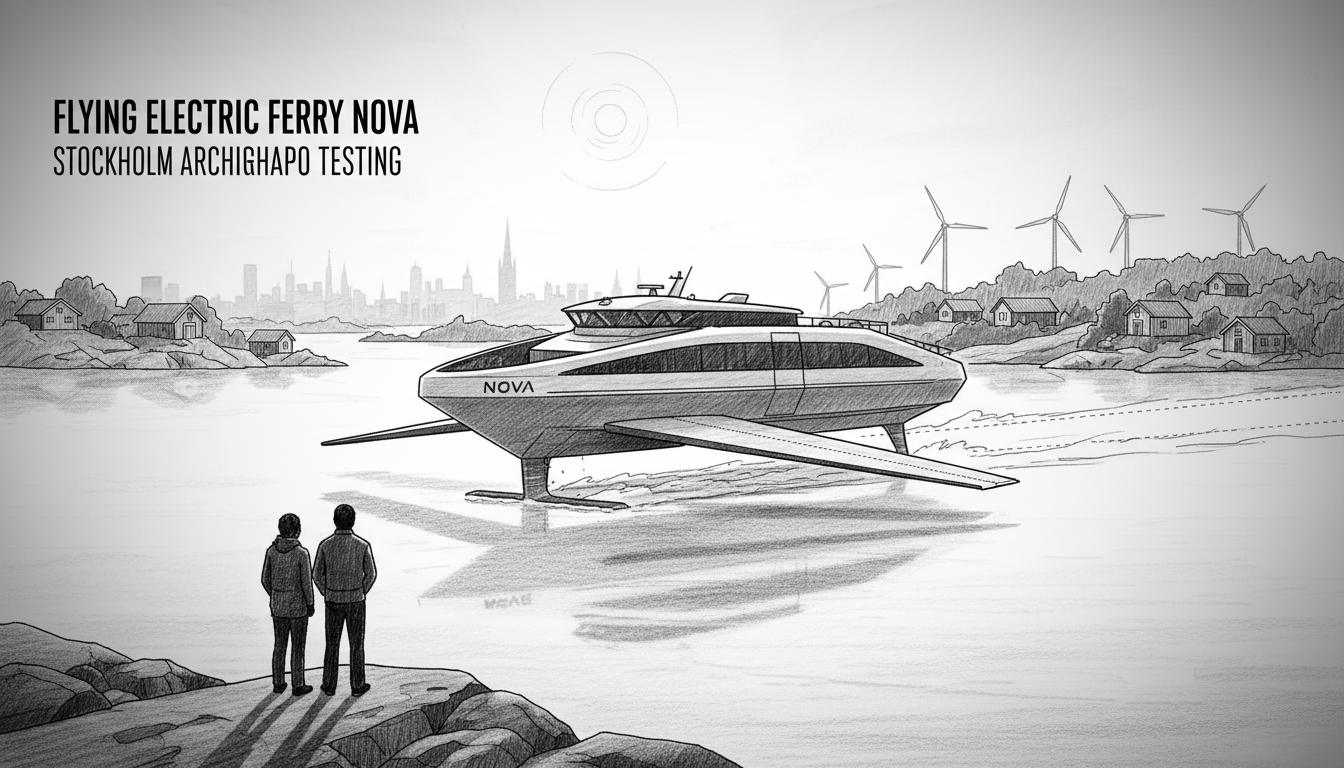Stockholm prepares to test a revolutionary electric ferry that literally flies above water. The Candela Nova model uses underwater wings to lift its hull, reducing energy consumption by up to 80 percent compared to conventional vessels.
The technology represents a major step forward in sustainable maritime transport. Previous testing on the Ekerö route demonstrated dramatically faster travel times and substantial emission reductions. Passengers responded enthusiastically to the improved service.
Regional officials confirmed testing will begin in the Stockholm archipelago during the Third Quarter and continue through 2028. The project involves collaboration between Stockholm Region and boat developer Candela, with Blidösundbolaget operating the service.
Michaela Haga, chair of Stockholm Region's Maritime Traffic Committee, explained the significance. "When we tested Nova on the Ekerö route, we could offer significantly faster travel times and received fantastic response from passengers. We also saw substantial emission reductions. That's why we're pleased to take the next step and see how the technology works in a more challenging archipelago environment."
The testing initiative stems directly from the regional budget directive to trial new technology and innovative solutions in archipelago transport. This represents a concrete commitment to decarbonizing maritime travel.
A key challenge involves charging infrastructure in remote locations. The project will deploy high-capacity battery storage at strategic archipelago points to avoid overloading local electrical grids. This approach could eventually strengthen emergency preparedness throughout the island network.
Route specifics remain undetermined, but the archipelago's complex geography provides ideal testing conditions. The flying ferry technology performs particularly well in rough waters where traditional boats struggle.
This Swedish electric ferry development aligns with broader Nordic commitments to sustainable transportation. Norway has pioneered electric ferries for years, while Denmark and Finland invest heavily in maritime electrification. The Nova project positions Sweden at the forefront of next-generation water transport.
International media outlets have closely followed the technology's development since initial pilot projects began. The Stockholm testing phase represents a critical milestone toward commercial implementation.
The project's success could transform archipelago transportation across Scandinavia and beyond. Many coastal communities face similar challenges with aging ferry fleets and environmental targets. Practical solutions developed in Stockholm may soon benefit regions worldwide.
Regional officials emphasize this represents more than just testing new equipment. They're building a template for sustainable archipelago living that balances modern transportation needs with environmental responsibility. The outcome could influence maritime policy across the European Union.
Local residents await the testing with cautious optimism. Faster, cleaner ferries would significantly improve daily life in the archipelago. The technology also promises quieter operation, reducing noise pollution in sensitive marine environments.

